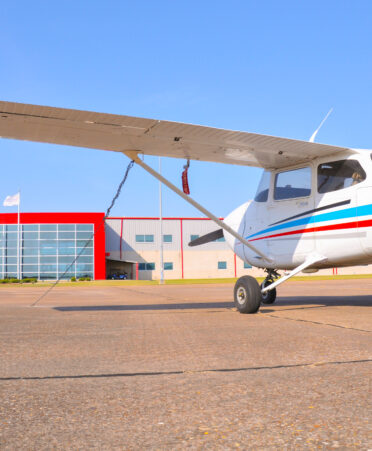(WACO, Texas) – Preparing to fly in Texas State Technical College’s Aircraft Pilot Training Technology program starts before students enter the cockpit with certified flight instructors.
Students in their first semester of the program take Aviation Meteorology to learn about cloud formation, what high- and low-pressure systems are, and how to analyze weather reports.
“The more you know about the weather, the better pilots they will be in the long run,” said Ed Viera, an instructor in the Aircraft Pilot Training Technology program who has taught the class for 23 years. “That is something they learn the rest of their lives.”
The program has flight simulators for which students pay a fee to use as many times as they want during a semester. Elaine Polster, a TSTC certified flight instructor, said simulators provide a practical way for students to practice approaches in programmed weather conditions.
Students learn how to fill out a TOLD (Takeoff and Landing Data) card before flights and have access to federal aviation websites and weather data to determine if flying conditions are optimal.
“As a certified flight instructor, we give the ‘go decision’ (to fly) to them,” said Jacob Teat, a TSTC certified flight instructor. “We are training them in aeronautical decision-making, or using pilot-in-command mentality. It is something you can see with judgment and learn over time.”
Polster said certified flight instructors step in when they feel that a student is making the wrong decision about flying and explain why.
“Many students do not come in with flight experience and soon discover the challenges of dealing with weather, particularly during winter weather,” Polster said. “Even a small amount of frost on an airplane renders it unfit for flying, regardless of size.”
Polster said ideal flying conditions are a dry, cool atmosphere with a breeze, which enable aircraft to perform at a superior level.
“When I instruct students, I prefer to fly in windy conditions to enable them to train in headwinds or crosswinds during landings,” she said. “It is crucial that students practice with winds during dual training to ensure that they can safely land an aircraft in preparation for when they fly solo.”
Teat said cold fronts are not good because they give more opportunities for thunderstorms or bad weather to form. If students encounter bad storms during flights, then they are instructed to fly around it or land at an airport, notify their certified flight instructor, and wait it out.
TSTC offers an Associate of Applied Science degree in the Aircraft Pilot Training Technology program at the Waco campus.
For more information on TSTC, go to tstc.edu.
